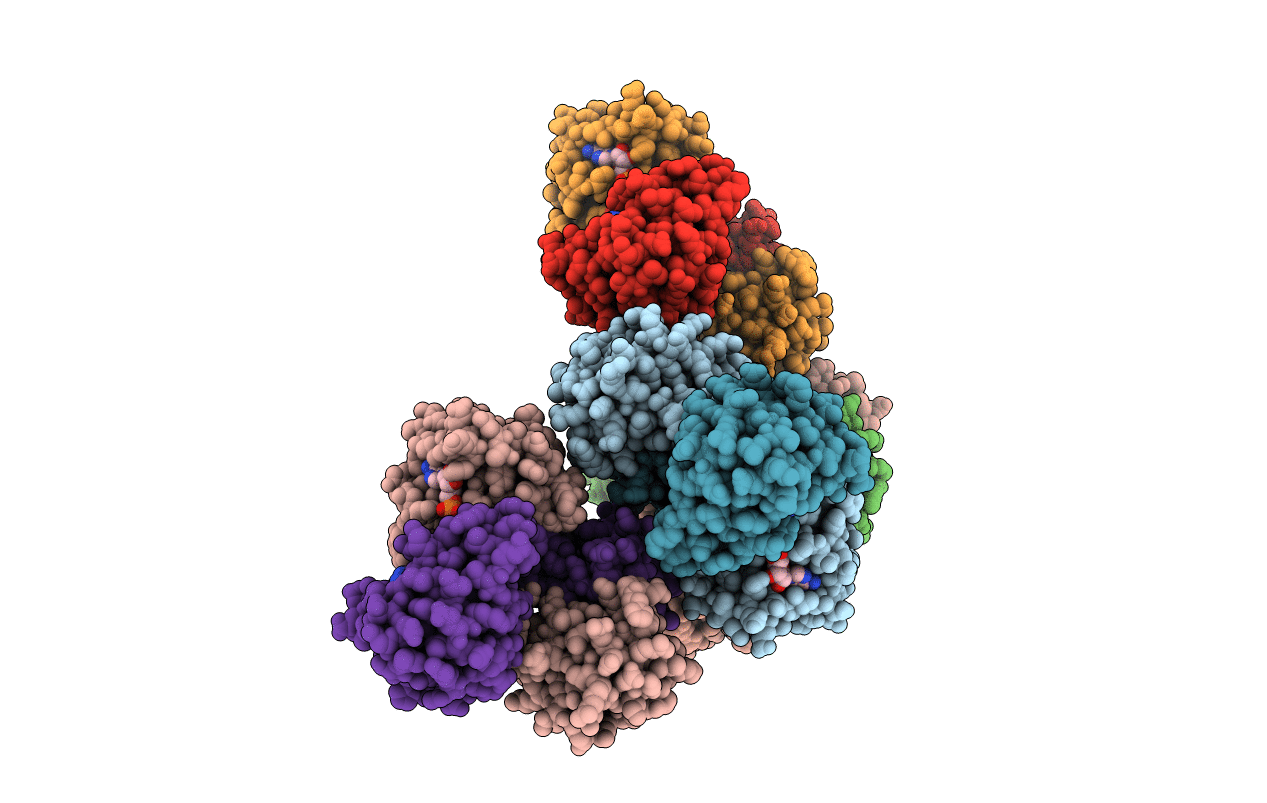
Deposition Date
2019-07-01
Release Date
2020-01-08
Last Version Date
2024-01-24
Entry Detail
PDB ID:
6S5G
Keywords:
Title:
Non-square conformation of KtrA A80P mutant ring with bound ADP
Biological Source:
Source Organism:
Bacillus subtilis subsp. subtilis str. 168 (Taxon ID: 224308)
Host Organism:
Method Details:
Experimental Method:
Resolution:
4.33 Å
R-Value Free:
0.31
R-Value Work:
0.25
R-Value Observed:
0.25
Space Group:
P 21 21 21


